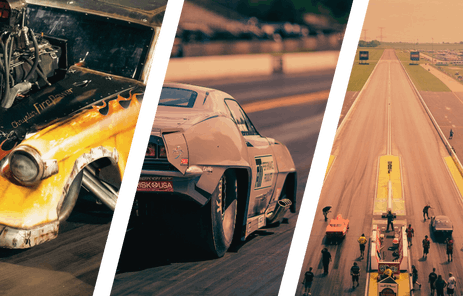 Our friends at Strange Engineering, the title sponsor of the all-new Coyote Stock eliminator in the NMRA Keystone Ford Nationals Series, announced this week they they will be upping the ante, so to speak, for competitors in the category by offering an extra cash bonus at the season-ending NMRA World Finals at Beech Bend Raceway Park in Bowling Green, Ky.
Our friends at Strange Engineering, the title sponsor of the all-new Coyote Stock eliminator in the NMRA Keystone Ford Nationals Series, announced this week they they will be upping the ante, so to speak, for competitors in the category by offering an extra cash bonus at the season-ending NMRA World Finals at Beech Bend Raceway Park in Bowling Green, Ky.
The extra incentive provided by Strange Engineering is three-fold and amounts to a potential $1,000 payday for any racer that can run the proverbial table.
The winner of the Coyote Stock class at the most prestigious event on the NMRA calendar will earn an extra $500 cash bonus. On top of that, the Coyote Stock racer with the best reaction time during eliminations will earn $250. If however the racer that knocks out the best reaction time on race day also goes on to win the event, an extra $250 is thrown in the pot, making for quite a days-work worth of cash when all is said and done.
 The Coyote Stock class was introduced to the NMRA lineup this season and is designed for 5.0L Coyote-powered Ford-bodied and Ford-powered vehicles dated 1954 and later to compete in a heads-up, performance-based environment. By mandating OEM sealed Ford Coyote engine and factory Ford Racing installation kits, Coyote Stock keeps costs relatively contained for a class of its nature.
The Coyote Stock class was introduced to the NMRA lineup this season and is designed for 5.0L Coyote-powered Ford-bodied and Ford-powered vehicles dated 1954 and later to compete in a heads-up, performance-based environment. By mandating OEM sealed Ford Coyote engine and factory Ford Racing installation kits, Coyote Stock keeps costs relatively contained for a class of its nature.
After four events, Joe Charles currently leads the Strange Engineering Coyote Stock points standings, with Joe Guertin trailing well behind in second. Thanks to a surge in performance leading to a win at the most recent event in Milan, Mich., Justin Burcham will be looking to make up a lot of ground in the points in the latter half of the season. Charles also currently holds both ends of the class record at 10.820 and 124.29 mph.
For more information on Strange Engineering and their renowned line of driveline and suspension components, log on to www.strangeengineering.net.
You might also like
Belt vs. Gear Drive Systems For Centrifugal Superchargers: Choosing What Works Best
Centrifugal supercharges can be spun with either a belt or gear drive. We take a look at each method and what applications work best for each.


